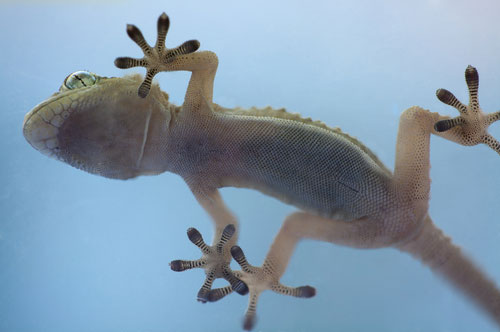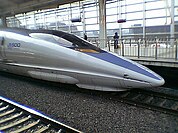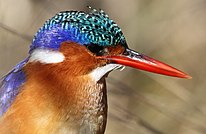Extreme Cold Warning in the United States: The Science Behind the Deep Freeze

This blog focuses on the articles based on science and technology. By reading this articles you would definitely develop interest in science. This articles would be only for educational purposes and would help you in knowing new tech things also with your studies , if you are science student.

The central idea is that nature has already fixed many problems society is facing. Animals, plants, and microorganisms are experienced engineers. They know what works, what’s appropriate, and most importantly, what lasts on Earth. The main belief of the biomimicry approach is that after 3,8 billion years of research and development, what did not work is now a fossil and what is around us is the secret to survival.
Biomimicry is a technological-oriented approach focused on putting nature’s lessons into practice. According to Janine Benyus, biomimicry sees nature as:
Biomimicry concerns many sectors of human activity. From medicine to research, industry, economy, architecture and urban planning, agriculture and management… This list is not exhaustive because biomimicry is, above all, a question of how we approach these areas of expertise. Therefore, it may apply more or less directly to all sectors.
The concept of biomimicry is based on a key idea: nature always operates on the principles of economy and efficiency while generating no waste. Remember Lavoir saying “nothing is lost, nothing is created, everything is transformed”? That’s the idea. No matter the field of application, the biomimetic philosophy is part of a global strategy of responsible and sustainable development that aims to balance the way the planet’s resources are used.

Although biomimicry is still an emerging sector, there are already some standards backing it up. It’s the case of the International Organization for Standardization (ISO) with ISO 18458 (on the terminology, concepts, and methodology) and the standard ISO 18459 (biomimetic optimization). AFNOR also has a standard known as XP X42-502 that focuses on biomimetic and eco-design.
Images credits to gecko feet on Shutterstock and biomimicry on Shutterstock.


Aircraft wing design and flight techniques are being inspired by birds and bats. The aerodynamics of streamlined design of improved Japanese high speed train Shinkansen 500 Series were modelled after the beak of kingfisher bird.
Biorobots based on the physiology and methods of locomotion of animals include BionicKangaroo which moves like a kangaroo, saving energy from one jump and transferring it to its next jump.[ Kamigami Robots, a children's toy, mimic cockroach locomotion to run quickly and efficiently over indoor and outdoor surfaces.
Researchers studied the termite's ability to maintain virtually constant temperature and humidity in their termite mounds in Africa despite outside temperatures that vary from 1.5 °C to 40 °C (35 °F to 104 °F). Researchers initially scanned a termite mound and created 3-D images of the mound structure, which revealed construction that could influence human building design. The Eastgate Centre, a mid-rise office complex in Harare, Zimbabwe, stays cool without air conditioning and uses only 10% of the energy of a conventional building of the same size.
Researchers in the Sapienza University of Rome were inspired by the natural ventilation in termite mounds and designed a double façade that significantly cuts down over lit areas in a building. Scientists have imitated the porous nature of mound walls by designing a facade with double panels that was able to reduce heat gained by radiation and increase heat loss by convection in cavity between the two panels. The overall cooling load on the building’s energy consumption was reduced by 15%.
A similar inspiration was drawn from the porous walls of termite mounds to design a naturally ventilated façade with a small ventilation gap. This design of façade is able to induce air flow due to the Venturi effect and continuously circulates rising air in the ventilation slot. Significant transfer of heat between the building’s external wall surface and the air flowing over it was observed. The design is coupled with greening of the façade. Green wall facilitates additional natural cooling via evaporation, respiration and transpiration in plants. The damp plant substrate further support the cooling effect.
Scientists in Shanghai University were able to replicate the complex microstructure of clay-made conduit network in the mound to mimic the excellent humidity control in mounds. They proposed a porous humidity control material (HCM) using Sepiolite and calcium chloride with water vapor adsorption-desorption content at 550 grams per meter squared. Calcium chloride is a desiccant and improves the water vapor adsorption-desorption property of the Bio-HCM. The proposed bio-HCM has a regime of interfiber mesopores which acts as a mini reservoir. The flexural strength of the proposed material was estimated to be 10.3 MPa using computational simulations.
In structural engineering, the Swiss Federal Institute of Technology (EPFL) has incorporated biomimetic characteristics in an adaptive deployable "tensegrity" bridge. The bridge can carry out self-diagnosis and self-repair. The arrangement of leaves on a plant has been adapted for better solar power collection.
Analysis of the elastic deformation happening when a pollinator lands on the sheath-like perch part of the flower Strelitzia reginae (known as Bird-of-Paradise flower) has inspired architects and scientists from the University of Freiburg and University of Stuttgart to create hingeless shading systems that can react to their environment. These bio-inspired products are sold under the name Flectofin.
Other hingeless bioinspired systems include Flectofold. Flectofold has been inspired from the trapping system developed by the carnivorous plant Aldrovanda vesiculosa.
There is a great need for new structural materials that are light weight but offer exceptional combinations of stiffness, strength, and toughness.
Such materials would need to be manufactured into bulk materials with complex shapes at high volume and low cost and would serve a variety of fields such as construction, transportation, energy storage and conversion. In a classic design problem, strength and toughness are more likely to be mutually exclusive i.e., strong materials are brittle and tough materials are weak. However, natural materials with complex and hierarchical material gradients that span from nano- to macro-scales are both strong and tough. Generally, most natural materials utilize limited chemical components but complex material architectures that give rise to exceptional mechanical properties. Understanding the highly diverse and multi functional biological materials and discovering approaches to replicate such structures will lead to advanced and more efficient technologies. Bone, nacre (abalone shell), teeth, the dactyl clubs of stomatopod shrimps and bamboo are great examples of damage tolerant materials. The exceptional resistance to fracture of bone is due to complex deformation and toughening mechanisms that operate at spanning different size scales - nanoscale structure of protein molecules to macroscopic physiological scale.
Nacre exhibits similar mechanical properties however with rather simpler structure. Nacre shows a brick and mortar like structure with thick mineral layer (0.2∼0.9-μm) of closely packed aragonite structures and thin organic matrix (∼20-nm). While thin films and micrometer sized samples that mimic these structures are already produced, successful production of bulk biomimetic structural materials is yet to be realized. However, numerous processing techniques have been proposed for producing nacre like materials.
Biomorphic mineralization is a technique that produces materials with morphologies and structures resembling those of natural living organisms by using bio-structures as templates for mineralization. Compared to other methods of material production, biomorphic mineralization is facile, environmentally benign and economic.
Freeze casting (Ice templating), an inexpensive method to mimic natural layered structures was employed by researchers at Lawrence Berkeley National Laboratory to create alumina-Al-Si and IT HAP-epoxy layered composites that match the mechanical properties of bone with an equivalent mineral/ organic content. Various further studies also employed similar methods to produce high strength and high toughness composites involving a variety of constituent phases.
Recent studies demonstrated production of cohesive and self supporting macroscopic tissue constructs that mimic living tissues by printing tens of thousands of heterologous picoliter droplets in software-defined, 3D millimeter-scale geometries. Efforts are also taken up to mimic the design of nacre in artificial composite materials using fused deposition modelling and the helicoidal structures of stomatopod clubs in the fabrication of high performance carbon fiber-epoxy composites.
Various established and novel additive manufacturing technologies like PolyJet printing, direct ink writing, 3D magnetic printing, multi-material magnetically assisted 3D printing and magnetically-assisted slip casting have also been utilized to mimic the complex micro-scale architectures of natural materials and provide huge scope for future research.
Spider web silk is as strong as the Kevlar used in bulletproof vests. Engineers could in principle use such a material, if it could be reengineered to have a long enough life, for parachute lines, suspension bridge cables, artificial ligaments for medicine, and other purposes. The self-sharpening teeth of many animals have been copied to make better cutting tools.
New ceramics that exhibit giant electret hysteresis have also been realized.
I want to suggest some books to you. If you want to know about this topic in detail than this books will help you a lot. You can refer and buy these book in discount by clicking on shop now below.
Comments
Post a Comment